Last updated on March 8th, 2024 at 10:55 am
The Snake plant, recognized as Sansevieria, is a popular indoor plant valued for its easy maintenance and air-purifying abilities. Originating from China, it boasts elongated, dark green leaves with yellow edges and light-green patterns, belonging to the same botanical family as asparagus. While praised for its air-cleansing traits by absorbing harmful compounds like formaldehyde and benzene, it’s important to note the plant’s mild toxicity if ingested by humans or pets. Learn effective ways to Propagate Snake plants to expand your indoor greenery.
Contents
Best Time To Propagate Snake Plant
Like many plants, snake plants thrive when they’re multiplied during their active growth phases, usually in summer and spring. It’s best to start making new ones in the first few days of spring. That way, you can benefit from the time when the plant grows quickly.
Snake plants can be multiplied in three main ways: dividing a large mature plant, or using stem cuttings in water or soil. Division suits big plants with numerous stems while stem-cutting methods work for plants of any size. Though water can be used for propagation, using soil is better to avoid decay.
Division Method To Propagate Snake Plant
Remove Plant from Pot
Spread a large sheet while you do this outdoors or indoors, Place your plant horizontally and remove the pot. If the plant’s roots are tightly packed, softly press the sides of the pot to release the root mass.
Separating Stems from the Mother Plant
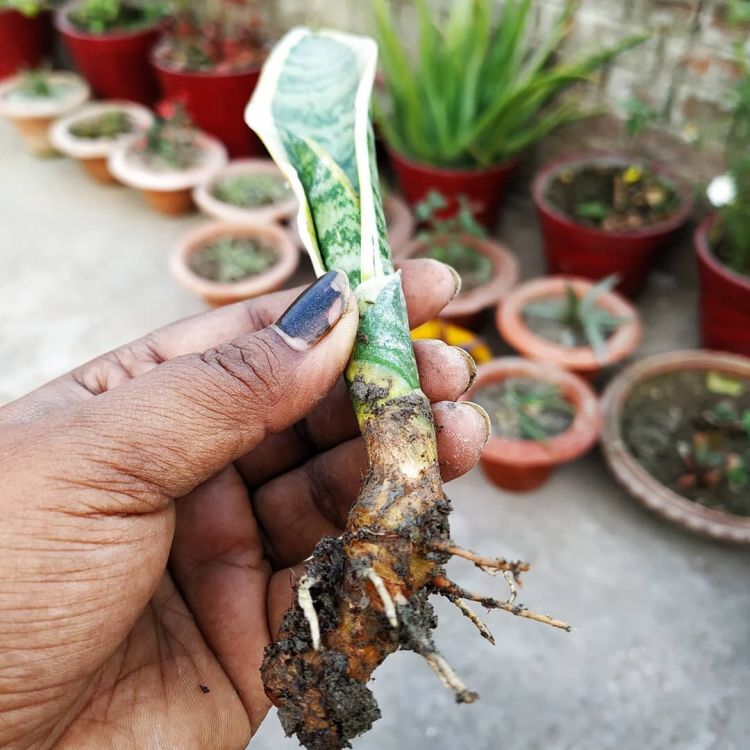
Image credit:botanicalblissfeed
Choose a bunch of stems you want to separate from the mother plant. Remove soil from the roots as much as you can manually. Gently separate the bunch from the mother plant, carefully disentangling the roots. If the soil is tightly compressed consider using sanitized a sharp knife or pruning shears cautiously to separate the root system, but try removing soil by hand first.
Replant The Stems
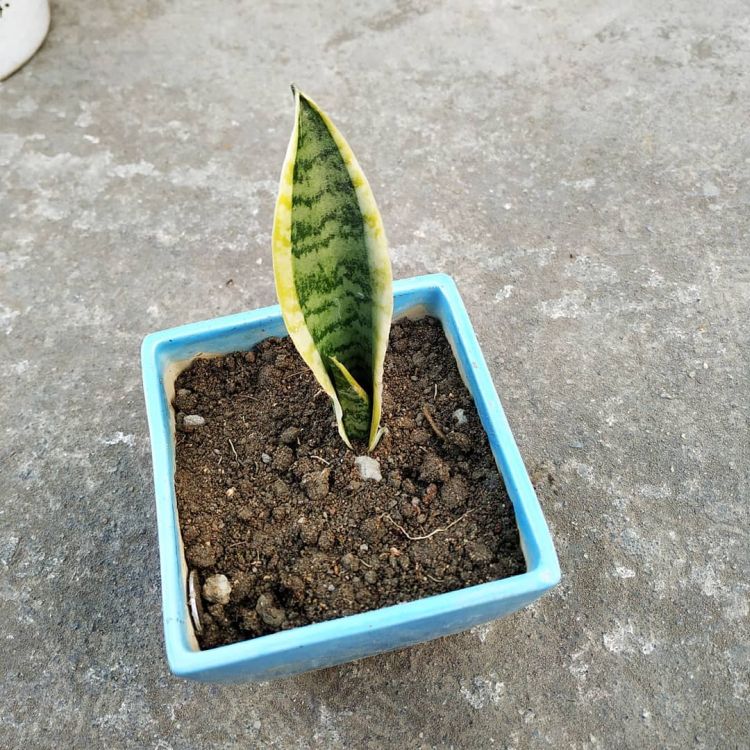
Image credit:botanicalblissfeed
Fill a new container that has proper drainage holes with a sandy soil mix that allows for good drainage. Plant the separated plants into this container. Firmly press the soil to secure the roots and place the container in an area with comparable lighting to its previous spot. Maintain a consistent watering schedule.
Pros of the Division Method
A quicker method than leaf propagation of snake plants, new leaves preserve the variegation of the original plant.
Cons of the Division Method
Needs a sizable snake plant with numerous shoots for this method.
Propagate Snake Plant in Soil
Take Cuttings Of Plant
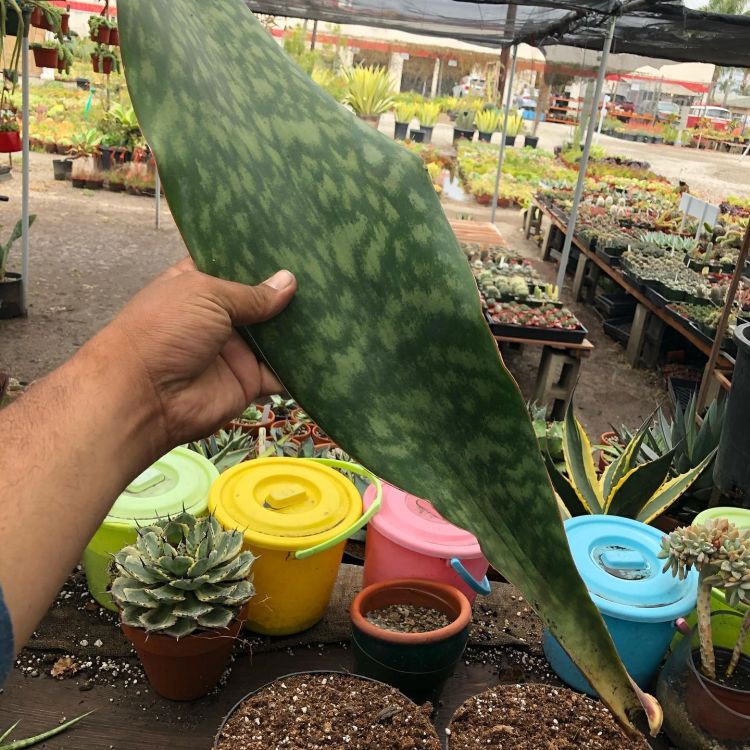
Image credit:gtnursery
To propagate snake plants in the soil cut a leaf by using pruning shears or a sharp knife to 1 or 2 leaves from the mother plant, cutting them near the soil surface, right above the base.
Divide Cuttings Into Sections
Cut each leaf into pieces about three to four inches tall. While dividing the leaf remember which end was the top of the leaf and the bottom of the original leaf. Make sure to plant the bottom part of each cutting in the mixed soil pot, as it’s the starting point for new roots and growth.
Score the Bottom Of Cuttings
For every leaf cutting, create a triangular shape at the base, originating from the cutting’s edges. After completing this step, the base of the cuttings will provide a larger surface area for new roots and ensure the proper alignment for rooting. Allow the cuttings to dry and develop a callus over several days.
Plant The Cutting In Soil
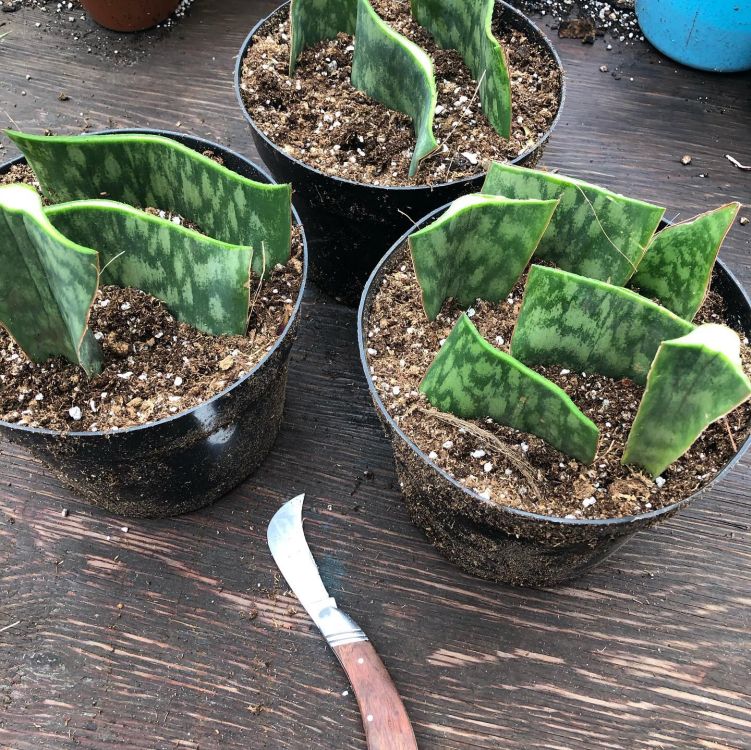
Image credit:gtnursery
Get a small container filled with a soil mix that drains well and place the leaf cuttings into it. Make sure the entire lower part of the cutting is covered in soil. Next, place the cuttings in an area with indirect but bright sunlight.
Moist the Soil
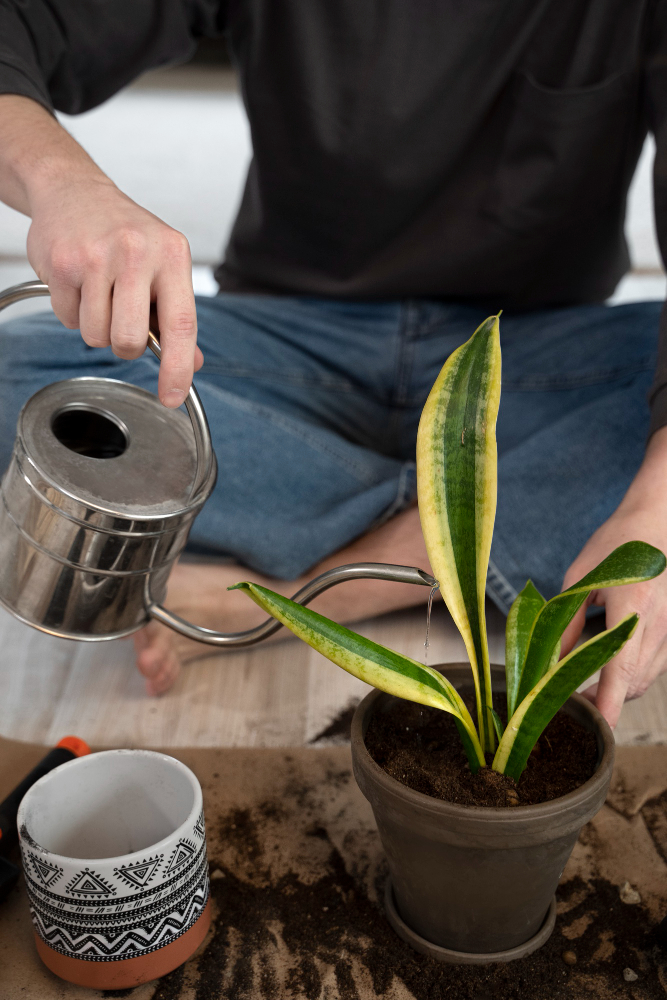
Image by Freepik
To propagate snake plants keep the soil slightly damp, not soaked, as the cuttings develop roots. Propagating snake plants requires patience—it takes about 3 months for roots and may be longer for new growth. Checking for roots gently pull the cuttings every 1 to 2 weeks. When you feel resistance, indicating roots, water sparingly every week. Eventually, you’ll see new snake plant growth from the leaf cuttings’ base.
Pros of Propagation in Soil
In this method, there’s no requirement to keep the root cuttings in water, and you can combine different varieties in a single pot.
Cons Of Propagation in Soil
In this method, new plants might not exhibit variegations similar to the parent plant, and root growth remains unseen unless the plant is dug up.
Propagate Snake Plant in Water

Image credit:pizzazzbargains1
Take Cuttings Of Plant
By using a sharp knife to 1 or 2 leaves from the mother plant, cutting them near the soil surface, right above the base.
Divide Cuttings Into Sections
Cut the leaf into pieces about 3 to 4 inches tall. While dividing the leaf remember which end was the top of the leaf and the bottom of the real leaf. Make sure to plant the bottom part of the leaf-cutting in the mixed soil pot, as it’s the starting point for root growth.
Score the Bottom Of Cuttings
For every leaf cutting, create a triangular shape at the base, originating from the cutting’s edges. After completing this step, the base of the cuttings will provide a larger space for fresh roots to develop, ensuring they align correctly for rooting. Let the cuttings rest and form a callus over several days.
Place the Stem Cutting In the Water
Take a container or glass jar and fill it with water at room temperature. Put the stem cuttings in water, and make sure the lower part of the stem cutting is underwater. Place the glass jar in an area with medium and bright but indirect light. Change the water every 1 to 2 weeks to maintain its freshness.
Plant the Cuttings
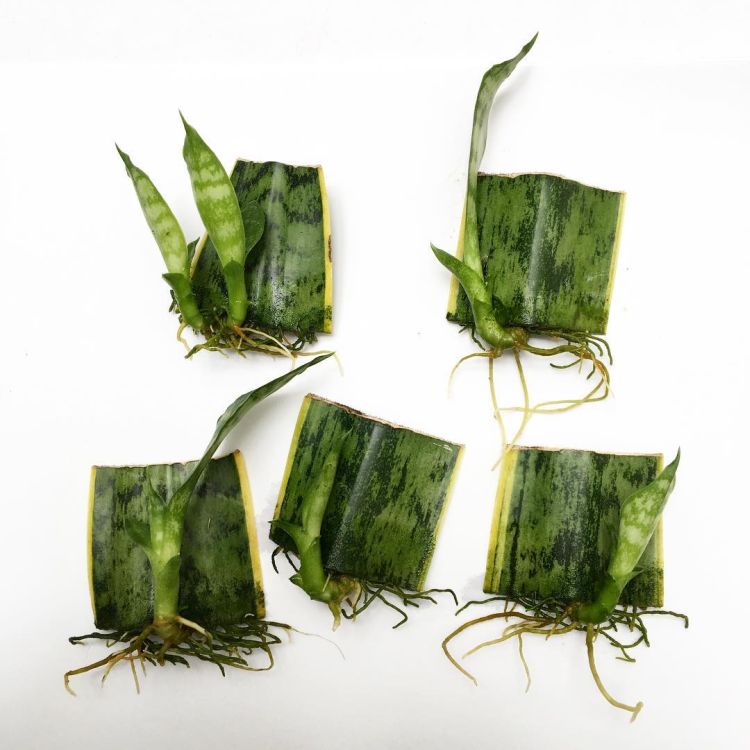
Image credit:abotanicaltheory
After the division process separates the stems, you have the option to replant them. It’s ideal to wait until the roots are about 3 centimeters long or wait for new growth in water. Once ready, choose a small pot with good drainage and sandy soil to plant these stems. Ensure the roots are covered properly in the soil mix for healthy growth.
Pros of Propagation in Water
To propagate snake plants in winter, the development of roots is observable, making it a straightforward process.
Cons of Propagation in Water
In this method, variegated snake plant cuttings might lose their pattern.
FAQS
Can variegated snake plant cuttings maintain their pattern when propagated?
There’s a possibility that variegated snake plant cuttings might lose their pattern during the propagation process.
Is it necessary to keep root cuttings in water for snake plant propagation?
No, it is not necessary, you can also choose to propagate them directly in soil.
What is the quickest method to propagate snake plants?
The division method is the fastest way to propagate snake plants.
How can I maintain variegation in snake plants during propagation?
To maintain variegation, consider using the division method and avoid propagation through leaf cuttings, as they might not retain the original pattern.
Propagating snake plants lets plant lovers grow their collection and see new growth. There are three ways to do it—division, soil, and water methods—each with its own perks. The division is quickest, while soil and water methods have unique features like considering variegation and seeing root growth. Keep in mind that variegated snake plants may lose their patterns during propagation. Patience is key, but the process is rewarding when you see new growth or pups!


3 thoughts on “How To Propagate Snake Plant Easily”